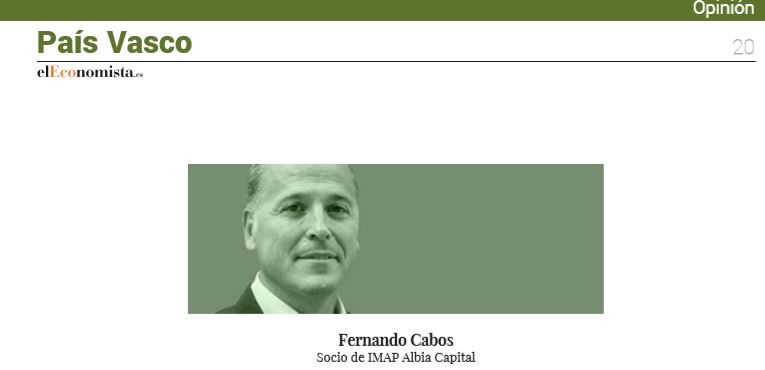5 keys to business divestiture
Throughout the life of companies there are times when their activity is not capable of generating enough resources to meet the commitments made to suppliers, staff, administrations and banks. This situation will unfortunately be the one that many companies will have to face in the coming months due to the blackout, which does not hibernate, of the economic activity originated by the COVID-19.
Although the several administrations have adopted certain mitigating measures, such as tax deferrals, ERTEs, loans guaranteed by governments or autonomous communities, etc., these measures will only serve to provide the necessary liquidity to cope with the blackout period (which is not insignificant).
However, once back in business, a high number of companies are facing a very different normality with higher debt and an uncertain recovery scenario and, therefore, with needs to accommodate the maturities of their debt to the cash flows of their activity. In the next few months the new normality will bring us old acquaintances such as restructuring and refinancing. The continuity of the companies that find themselves in this situation is going to depend on the problem being managed in a decisive, professional manner and with an appropriate methodology.
In this context, it is necessary to consider a number of keys to deal with the situation that is approaching.
Key 1. Realism and Anticipation
Although it may be hard, it is essential to assume that the company is facing a crisis situation. In addition, this should be done early enough to contain the “bleeding” while it is still manageable and to allow the measures to take time to take effect.
Key 2. The problem is not (only) financial
Finance is only the result of business activity, so lack of liquidity, inability to make payments and, in short, financial problems are only the tip of the iceberg of a more complicated business situation. There is no point in attacking the financial problem by seeking capital or refinancing the debt if the causes and business problems behind it are not also attacked. Refinancing without restructuring is doomed to failure.
Key 3. Liquidity rules
It is well known that companies die for the cash (the lack of it, of course) and, curiously, in crisis situations, it is not surprising how often companies undertake actions that will bring results in the future at the cost of burning a treasury that the company cannot afford. At this time we must resort to the usual “Cash is King” and stretch the cash flow by adjusting costs to predictable income, reducing stocks, delaying investments, lengthening payments and shortening collections. In short, shock measures to stabilize the company in the shortest possible time in order to have resources available to implement measures that will allow the repositioning of the company in the medium term.
Key 4. Investors look for projects not problems
It is in crisis situations that one misses an investor who provides capital to plug the hole, even more so in the current context of abundant liquidity, at least for the time being. Bad news: investors are investing in projects, not problems. Therefore, homework must be done, remedies must be applied to overcome the crisis situation and a project must be rebuilt that offers the profitability sought by the investors. It should not be forgotten that those investors who invest in crisis situations have the objective of refloating with their means and remunerating themselves with the value of the healthy company and, therefore, do not have the current shareholders (nor part of the management team).
Key 5. Leadership and credibility
Having clear the previous premises “only” remains to define a Plan (either strategic or of viability) and to execute it. And this is the fact that in these situations we are faced with the dichotomy of crisis/opportunity or, what is the same, the repositioning of the company or the abyss.
Coming out of a difficult situation, besides the Plan, requires clear leadership, credibility and enormous doses of energy to align the interests of all parties involved. Facing this situation from exhaustion, from the lack of courage to deal with a new crisis is synonymous with failure, perhaps not immediate but sure in the medium term. If this is our disposition, the best option is to step aside, direct the company from its governing bodies and make way for whoever takes on the challenge with the leadership, energy and dedication that the situation demands. Reinforcing the management team with expert advisors and managers in crisis situations is another advisable action because they will contribute to the Plan and its execution with the necessary credibility in the eyes of the shareholders, through their work and their commitment.

